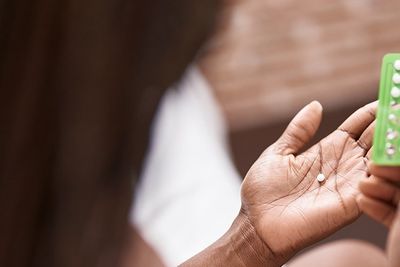One Latina's Struggle with Reproductive Freedom and Cultural Expectations
I’d be turning 30 in less than 20 days and yet found myself with no desire for children.
In fact, the next day I was going in for an appointment to get an Intrauterine Device (IUD) inserted. I was nervous but feeling a sense of relief that I’d have one of the safest forms of birth control to prevent a pregnancy for the next six years.
The next day I arrived at the appointment right on time to avoid having to sit in the waiting room and think about the intense pain I might be in in the next 30 minutes. Instead I arrived 2 minutes before the appointment and was called in five minutes after I checked in. I was still nervous and dreading it for many reasons that didn’t include the physical pain of inserting a foreign object into my cervix.
For starters, I’d consider myself a typical Mexican daughter who grew up in a very Catholic and religious home. Not only does the Catholic church not allow birth control, it prohibits cohabitation with a partner before marriage and I was already breaking two rules under a religion that was so persistently shoved in my face as a kid and young adult. Although I’ve wrestled with those demons and would consider it a won fight, I still find myself feeling shameful in these types of situations. The Catholic guilt is still there, along with the idea that I might be doing something wrong is still there.
Yet, when I was laying back, inhaling and exhaling deeply as I felt tightness and severe pressure in my pelvis, I felt the continued sense of relief. A few moments of pain to avoid an unplanned pregnancy reminded me that it was all worth it.
What a dichotomy. The idea that I can feel so liberated by the choice to plan my life, yet feel trapped by the beliefs I was raised with. Now mind you, I am very open with my mother and our relationship has shifted, but even then, I feel a weird hesitation to share with my mom that I have an IUD. I still feel the echoes of advice around staying away from boys and not getting pregnant at a young age. I am thirty years old. Why are these echoes still so loud?
I find myself wondering if this is why I also feel so unready and quite frankly, uninterested in bearing a child. I wonder if years of repeated messaging that a child would end my dreams and goals still carries weight in a time in my life when I’m well positioned to do as I please. I can’t help but wonder if my brain has been wired to fear a baby and the responsibility of a child because it correlates it to the end of my aspirations and goals.
I can’t help but wonder if years of trying to deliver the highest results of who I am to my parents has engraved in me a fear of ruining the fruits of my labor.
And yet here I am, almost 30, wondering what is next and when I’ll get over this hump. Wondering if my realization of not wanting kids soon (or maybe ever) will help me start the process of healing all the trauma of the things I was told as a young teen. I am reminded that this is yet another hurdle that immigrants and first-generation children go through. That this is just another experience in many of our lives – the ongoing guilt and shame of needing to make my parents’ efforts worth it all. The pressure to ensure that I was not to end up a statistic.
I left my appointment on Friday feeling relief and a mix of heaviness wondering if 15-year-old me would have imagined this life. A life of choosing what comes next and a life of unlearning what made me who I am.
For now, I sit with my emotions thinking they are okay, no matter what I feel. Fear, joy, relief, happiness or even resentment – all things that I felt in that moment. One thing I do know from my lived experiences is that the culture I love so much won’t look the same for the hypothetical children I might decide to have. I know that it will be a much more understanding culture that honors their natural feelings of sexual curiosity and knowledge.
